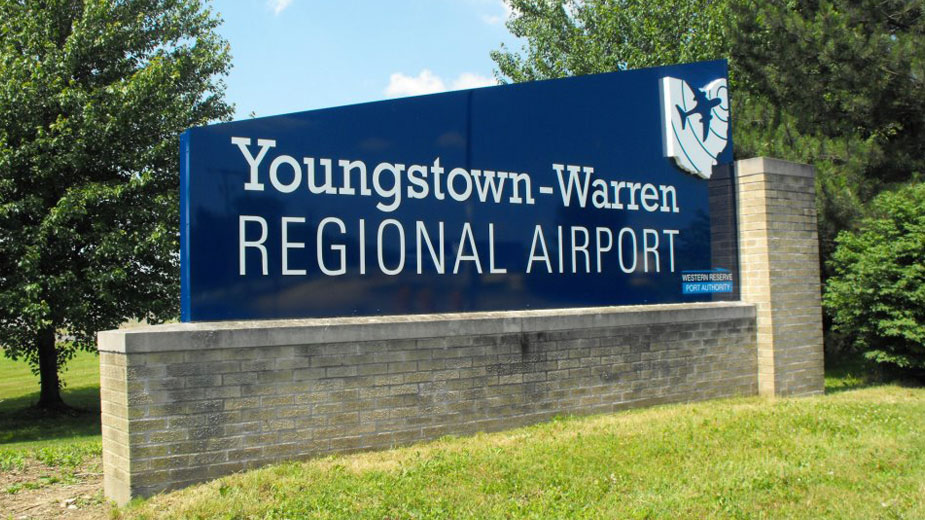JA Challenges Students to Build Best Business
YOUNGSTOWN, Ohio — As students from eight schools huddle around the computers in the first-floor labs of Williamson Hall, you catch snippets of what sounds like a company board meeting.
“What if we throw more into marketing? Maybe drop the price a bit?”
“If we put more into R&D now, we can get ahead before something happens.”
“We’re putting too much into production. We aren’t selling that much.”
The product they’re trying to build a business around – an all-purpose holographic pad that, with the right resources, could play music videos, phone calls, video games and more – is fictional. No matter. All of the students take this competition, the Junior Achievement Titan Challenge, seriously.
Hosted by Junior Achievement of Mahoning Valley, the teams competed Thursday for scholarships of up to $500 by building the best business possible. To determine a winner, the judges scored each team on retained earnings, demand potential, productivity, market share and projected growth.
“It really simulates an actual economy. You can be having a great year and then hit a recession. Then people stop buying as soon as you’ve committed a lot of money to research and development so you can’t sell your products,” said Dave Blasko, a principal at HBK and mentor for one of the teams from Cardinal Mooney. “These students have to plan for anything, just like in real life.”
Last year, Blasko’s first at the competition, his team won the contest, earning each student a $500 scholarship.
All teams are in the same industry, but not all deal with the same economy, says JA President Michele Merkel.
“They’re all in the same industry with the same product. They must make decisions on what to do with that product, whether it’s price, design or development,” she explained. “They may start out in a good economy before it crashes and they have to decide what they do with their supply or cost.”
Some students entered with their plans set on how they’d increase their business and adjust to conditions as they were changed. They were certain about how they’d balance the resources assigned their company and male the best allocations on how to spend for capital, research and development, marketing, production and charitable giving, all while adjusting the price of its product.
Each company was assigned the name of the high school where the team members are enrolled and a team number.
“We’re starting with research and development and a little in marketing,” said Matt Gorrell, a member of Champion 1 Inc. during a practice round at the outset of JA Titan. “If we can get into production with the best product, we can start ahead of everyone else.”
That decision by Gorrell and his teammate, Annie McConnaughey, also from Champion High School, paid off initially as they finished at the top of their group when the first quarter ended. But low revenues didn’t compensate for early costs and Champion 1 fell slowly in the rankings, ending the second quarter in second place and slipped to fourth by the end of the third.
“It’s a great simulation to teach critical thinking skills and decision making. Each group has to collaborate because teamwork is such a big part of this,” said Beth Nicholas, a teacher at Champion High School. “They can immediately see the impact of their actions. It makes them think about the business cycle and its ebbs and flows.”
Working with the students to offer advice and help them through problems were mentors from several industries, such as banking, distribution, health care and technology. Before the beginning, the mentor to Champion 1 joined them in a team-building exercise.
“We want them to get to know their business mentors. Since they’re meeting each other for the first time, to break the ice we have [the mentors participate in] a challenge with the students. They get 20 sticks of spaghetti, a marshmallow, a yard of tape and a yard of string to build the tallest free-standing tower they can,” Merkel says.
The tallest, built by Blasko’s group, was 25.5 inches tall. After the winner was announced, Merkel informed the students that, typically, business students build the shortest towers – they average 10 inches in height — but that executive boards associated with Junior Achievement are second to engineers. Building a team is more important than building the tallest tower underscores the importance of teamwork.
In the end, Howland 1 Inc. won the contest in their first appearance at the event, with each member taking home a $500 scholarship from Home Savings and Loan Co. Teams from Champion came in second and third.
“It’d tell us about economic changes and we’d adjust, being careful to watch our credit margins,” said Vinnie Roberto, a member of the Howland team. We also paid attention to what other companies were doing. If they’re selling at a higher price, but not selling as many, we knew to lower ours and produce more to move in on the market.”
The two other members were Robert Malito and Daniel Daum.
“We had to stay on our feet as it went on, having less and less time to make adjustments,” Roberto said. “The last round was only four minutes [per quarter], so we had to cooperate and reach agreements to make those quick, analytical decisions.”
PICTURED: These Cardinal Mooney students were mentored by Frank Balog from HBK (standing). From left are Bowen Guo, David McDowell and Lauren Lottier.
Copyright 2024 The Business Journal, Youngstown, Ohio.



